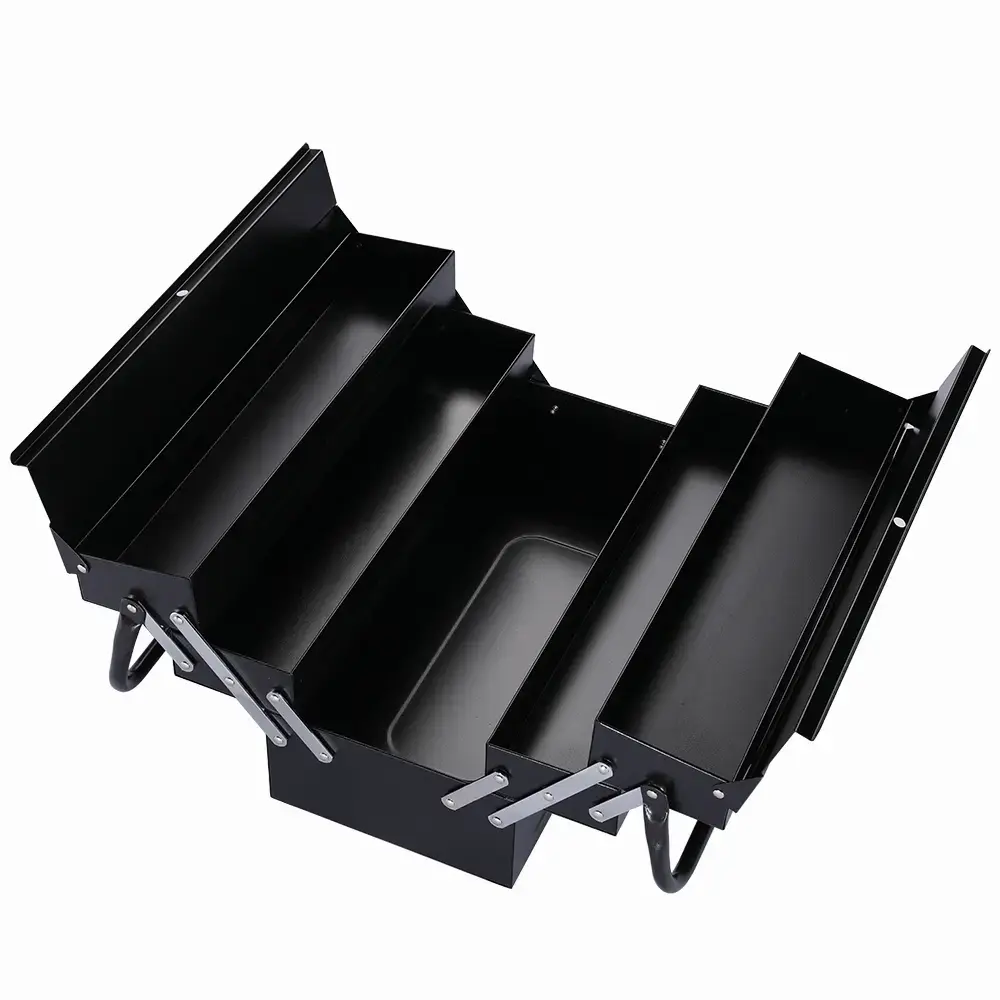Special storage tips for outdoor toolboxes
Outdoor toolbox storage skills can not only help you better organize tools, but also improve the efficiency of use and protection of tools. Here are some special storage tips:
1. Use wall space for vertical storage
- Pegboard: Pegboard provides an efficient and adaptable means of vertical tool storage. Perforated panels allow you to arrange hooks, baskets, and shelves according to your personal storage needs. Pegboard can display garden tools such as spatula, gloves and pruning shears for easy use and orderly storage in any garden shed or garage.
Magnetic stripes: Magnetic stripes are an efficient and space-saving way to store small garden tools. By attaching magnetic strips to walls or cabinets, it provides a simple and secure storage solution for tools such as scissors, pruners and screwdrivers.
- Hangers and hooks: Use sturdy hangers or hooks on the wall to securely secure larger garden tools, such as rakes, shovels, and brooms. Organizing them by size or type makes it easier to find what you need.
Vertical garden tool holders: Vertical tool holders are specifically designed for efficient storage of multiple tools. These shelves often include slots or compartments for easy installation of garden tools such as rakes, hoes, and shovels. By utilizing vertical space, these racks help save floor space while efficiently organizing tools.
2. Efficient storage inside the toolbox
- Categorize the tools by type, such as screwdrivers, wrenches, pliers, etc., and then put the same tools together. This makes it easy to find and use.
- Long tools such as shovels, rakes, etc. are placed at the bottom of the toolbox, and short tools such as screwdriver, wrench, etc. are placed on the upper layer, which can save space and make it easy to use.
- Separate soft and hard tools: Place softer tools such as rubber mallets and hoses on the upper part of the toolbox, and harder tools such as steel wrenches and hammers on the bottom to avoid friction and damage between tools.
- Accessories storage: Place the accessories of the tool, such as screws, bolts, washers, etc., in a special storage box or bag, and then place the storage box or bag on the side or bottom of the toolbox for easy access.
- Special storage tools: The use of special storage tools, such as wrench rails, drill boxes, etc., can help you better store tools and avoid confusion between tools.
3. Protective measures
Foam pads and towels: When placing tools, foam pads or towels can be used as a protective layer to avoid friction and collision between tools and extend the service life of tools.
- Lining paper: If the tool will often have some greasy, you can try to pad a layer of lining paper under it, and you can also wrap it with lining paper before putting it into the toolbox, which can prevent contamination of other tools or toolboxes.
4. Labels and logos
- Label: If there are many toolboxes, remember to use labels for identification. This way you can quickly find the tool kit you need and avoid wasting time.
5. Stay organized
- Hang extra tools: If you have many of the same tools, you can use a pegboard to hang extra tools and keep only the most basic tools in the toolbox. This way, in case other tools are needed, they can be easily removed from the pegboard.
- Buy the organizer: The most easily confused toolbox is screws, nails and other small items. You can buy some small storage boxes for storage, or use old coffee cans, snack bottles, etc. But be sure to label it.
- Clean and put back tools in time after use: After each use of tools, remember to clean and put back in place. This will keep the toolbox clean and prevent tools from falling apart.
With these special storage tips, you can manage and use your outdoor toolbox more efficiently, ensuring that your tools are clean and safe.

